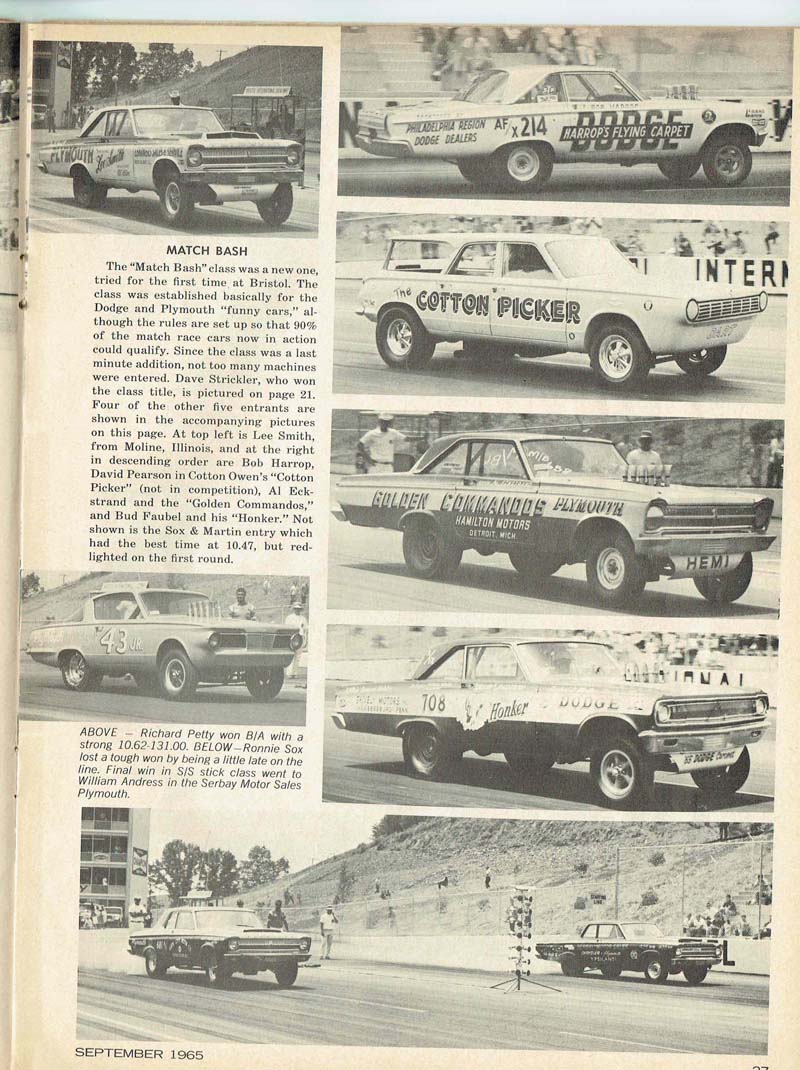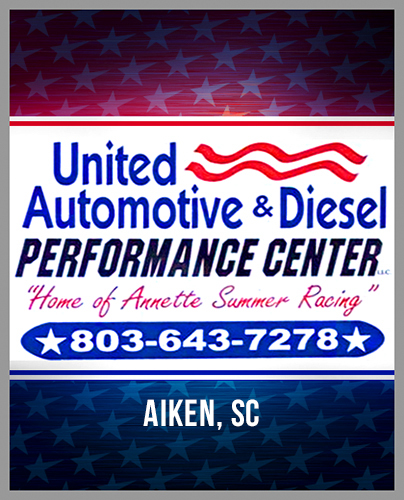BRISTOL, BABY! - LOOKING BACK ON THE TRACK'S COLORFUL HISTORY
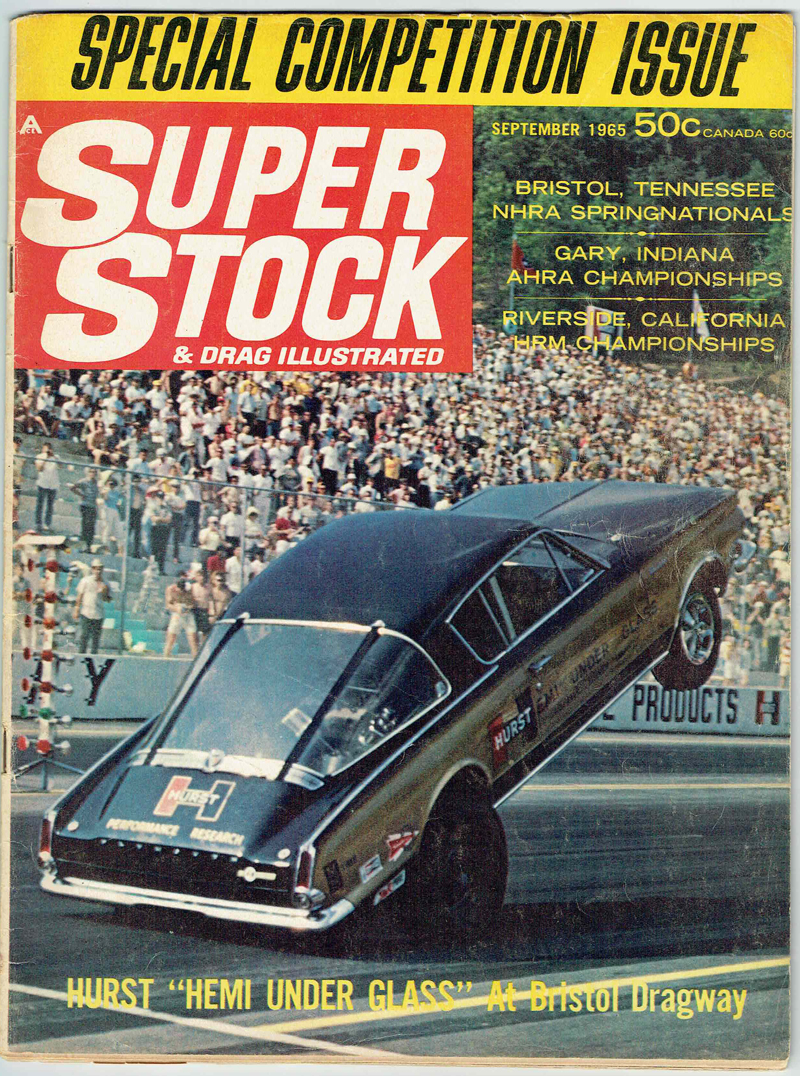
Bristol International Dragway. Personally, what I still remember the most is how damp and green the whole facility was. The IHRA Spring Nationals, traditionally held on the first weekend of June, was going to start the next day, and the regular rain in the mountains of east Tennessee was all new to me. As I recall now, the big reason I had made the trip down was to go to a drag racing memorabilia show that Don Gillespie had decided to host, and number of my northeast biddies had told me it was worth making an 8-hor drive for. At that time, I was publishing a little magazine called Quarter Milestones devoted to those racing artifacts, and I had gotten photo credentials as well to try and take some car features for one of the numerous car magazines then offered on the newsstand.
I walked into this huge dark tower nested in the center of a narrow valley, where a young lady gave me a photo waiver to sign and a press badge. At that time, there were several small creeks that ran around the place, as well as a substantial lowland swamp area, the area south of the tower that is presently the sportsman pits for this weekend’s NHRA Supergrip Thunder Valley Nationals. This year, the event is now only a week off of when that original NHRA Springnationals had first been held here in 1965.
Bristol was the heart of southern-style drag racing, and the IHRA cars were, frankly, crazy. I had seen a few of them up at Atco when Billy Meyer had owned the International Hot Rod Association for one fateful year, but Bristol was the true representative of IHRA. Bristol racing facility builder Larry Carrier had founded that sanctioning body in late 1970 after realizing that neither NHRA’s Wally Parks nor AHRA’s Jim Tice were doing thing the way he wanted. As a result, IHRA also grabbed a bunch of big-name tracks in those early days and offered world class racing, but by the early 1990s, it was better known for every sort of contraption that came out of the woodwork for this race.
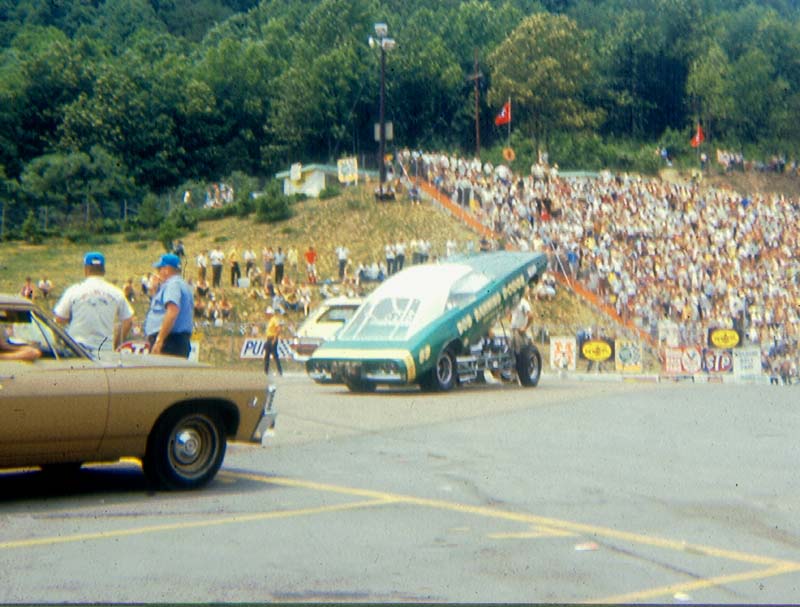
In addition to Top Fuel, which had the fans on the fence for Saturday, Pro Mod had just arrived, and Top Sportsman was still insane as well. Though now run on the NHRA circuit, the latter was an IHRA exclusive back then, basically a no-holds-barred “doorslammer” dial-in bracket car class that had evolved into a slug fest for a Quick 8 program that usually moved the cars unqualified from #33 to about #40 into the TS program. And the term doorslammer is used loosely as there were many cars that were a shadow of anything stock. It figured, as even the 8.90-index Quick Rod category still had old funny cars and pro stockers running in it. Bristol was still historic in appearance then, and a great place to see it happen.
And the grandstands… wide slabs of aging but solid concrete filled with serious drinkers, country girls, little kids, and all sort of craziness. At one of those events, I remember talking to a Sullivan County Sheriffs officer on Sunday morning, noting it must have been a little crazy the previous night, with the rain and crowd control. Without grinning, he looked at me behind mirrored sunglasses and stated nonchalantly, “yep, had to wipe the hood of the squad car with somebody’s face.” The cops are the ONLY thing that kept the Bristol grandstands from going completely insane. Most IHRA staffers rarely went up there on a Saturday night…
That first weekend was significant for a second reason. All the top names in the drag racing media were here as well. I met Dave Wallace of HOT ROD magazine fame, Jon Asher, long time contributor to so racing magazines, and Super Stock & Drag Illustrated editor Steve Collison, all for the first time here personally. There was also an assortment of characters like myself, still getting started. One of them was this kid named Bobby Bennett, who of course now manages all of this media work. If you wanted to see how the “other half” of the drag racing world lived, a drag race at Bristol was a must.

It was love at first sight for me. I loved the environment, the history and the noted sound. I would later note if I had the choice between doing this and Indy, I was going to go south. To be brutally honest, however, my action photography was still “under development”. I would get lucky every roll of film for sure, but those early images are buried here in some container or another, and while I wanted to add something to spice this up, locating them proved impossible. It probably would have sucked anyhow…
_
Fast forward to early 1996. Don Gillespie was moving into the IHRA magazine’s editor’s chair and needed a cohort. I was living in Pennsylvania working a dead-end job in the financial sector and had begun avidly researching racing history. And my photo skills had improved enough that Don offered me the job. Full time drag racing? Oh, yeeeaah… (oh, yeah, there would be a cut in pay, and the magazine Drag Review was SIX ISSUES behind!). In June, I was back in Bristol to live, and began a whirlwind tour that took me to some of IHRA’s most backwoods tracks, a few which even hosted national events, as well as driving overnight Sunday to Monday to get one magazine a week out for most of that summer and fall. Soon after I arrived, a disastrous financial decision made at Steele, Alabama just before my hiring had seen a big shakeup at the top of the company, but no paychecks bounced and by that fall, things were evened out and my wife and three little kids were also in town.
So, the IHRA office on the Bristol Dragway property was separate from that tower, and right of a 1970s “Rockford Files” filming set – faux wood paneling, little offices rooms, catty secretaries. We kept our noses down, got the magazine caught up, and at the end of the year, an oil company called Prolong took over. Gillespie was moving into the PR side of things and working on his epic multi-volume series on Lions Drag Strip in California. Publisher Leonard Emanuelson, another HOT ROD veteran, was brought on to handle the oversight of Drag Review. I became the editor, and the Bristol office was now hopping with new-found excitement. There was money to be sure, but Prolong did not “last long,” and my wife and I had just bought a small farm 30 miles from the track when Bill Bader, owner of Norwalk Raceway, bought the entire IHRA operation. Late that winter, he announced the entire thing would be moving to Ohio and had assumed I was on board with it. My wife and I decided we were not interested in moving back north again, however, so I worked under contract as the editor through 1997. The late Mr. Bader, who was a good guy, really wanted me up there fulltime if I were to continue. And that was the end of it, and the Dragway was in transition as well…
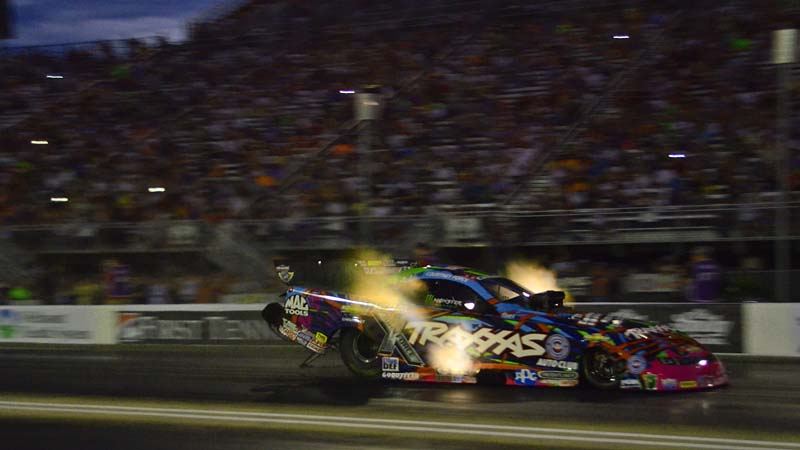
Bristol Dragway became part of forces unexpected but fully predictable. NASACR was at its peak popularity, and Bruton Smith had added the Bristol Motor Speedway to his family of tracks. The drag strip would become a nice parking lot for race weekend at the adjacent circle track (so the rumor went). However, those concerns went unfounded as Smith and NHRA came to an agreement and instead the track got a massive makeover. Gone were the concrete stands and tons of earth were moved to literally raise the valley. The track surface was moved both higher, backward and skewed several degrees to the right to get rid of a mountain bend in the shutdown area (the catch fence is there now).
After $18M in changes, the new Bristol Dragway track hosted two NHRA All-Star races in 1999 and 2000, and then became home of the Thunder Valley Nationals. I lived nearly but was not always around due my employment in the automotive magazine business that was not fully focused on drag racing. If I happened to be at home to listen from the top of my mountain right on a Sunday afternoon when this race was happening, I believed could faintly hear fuel cars.
Fast forward to 2024, it has been a great reality to see Bristol Dragway become what it now is. The world-class NHRA facility is still a must-see for a lot of fans. History still leaches from the surrounding mountains, the echo that created the “Thunder Valley” moniker remains evident, and race fans enjoy the weather and the spectacle. In 2023, for the first time in 30+ years, I did no NHRA events due to my work at the now-defunct Mopar Action magazine. Alas, even that print job got killed off last November. I got here this morning in the cool mountain air, and I look forward to being at the Supergrip Thunder Valley Nationals this weekend to catch up with friends, watch some solid racing, and recall the past that is Bristol Dragway.





